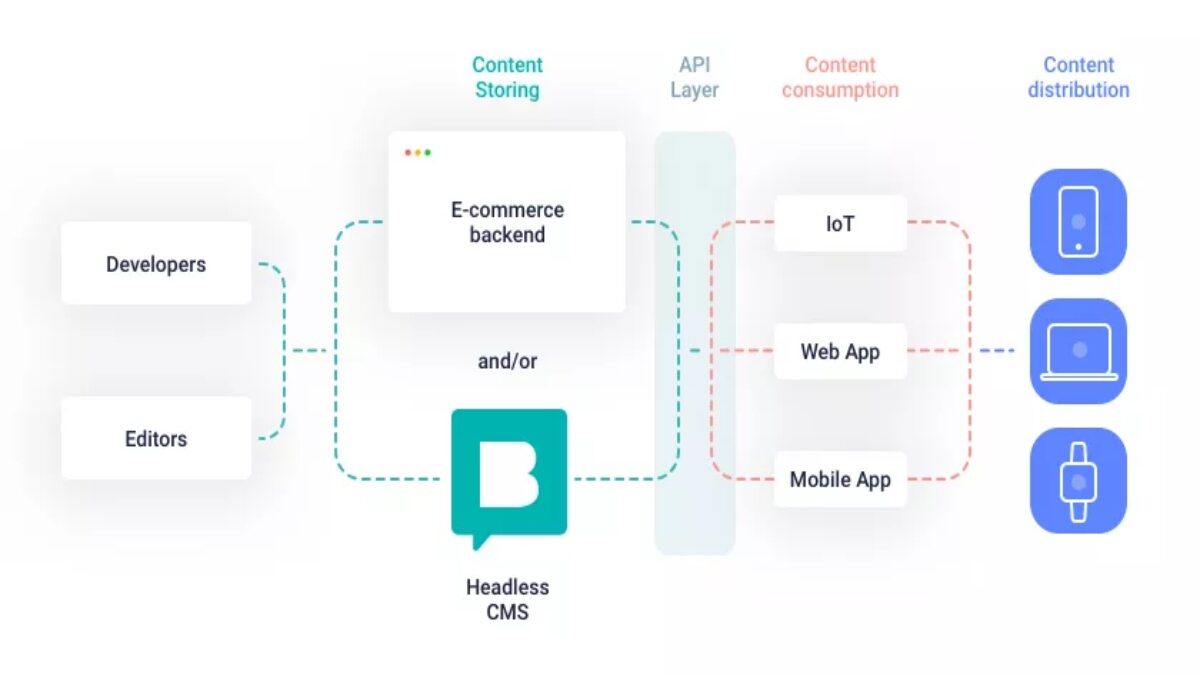Headless E-Commerce Platform: In recent years, most businesses have shifted to online spaces. Most people also prefer shopping online. For a while, SMEs setting up e-commerce platforms often found it hard to compete with big spenders such as Amazon and Alibaba. The success of an online business relies on the type of e-commerce platform you choose, SEO, and marketing.
When it comes to e-commerce solutions, you should go for a headless e-commerce platform such as Virto Commerce over the conventional types. So, what is a headless e-commerce solution?
Table of Contents
ToggleHeadless E-Commerce Architecture
Headless e-commerce solutions are decoupled, meaning that the front end and backend are decoupled. The front is the storefront consisting of the landing page with the products, images, and other relevant features such as buttons. On the other hand, the backend features the database and other APIs that handle customer requests.
Developers can use different tech stacks to deliver the best customer experience. Headless architectures promote agile development, meaning that changes can be made on the platform without affecting performance.
Headless E-Commerce Platform vs. Traditional Ecommerce
Traditional e-commerce solutions have everything bundled together. Some years ago, most businesses relied on traditional e-commerce platforms to run their businesses. The downside of using a traditional or conventional e-commerce platform is that you need an experienced team of developers to run feature updates and customizations.
Developers are also stifled when it comes to the customization of features. However, traditional e-commerce units are easy to set up since most come with a host of pre-installed tools that make deployment easier.
Headless e-commerce units are lightweight and fast. Customer requests are handled by APIs, which can handle plenty of requests at a time. Overall, headless e-commerce platforms focus more on quality customer experiences.
Scalability
A headless e-commerce platform brings scalability to a whole new level. If you’re running an e-commerce unit, you need a platform that will scale as the business grows. You will want a platform where you can run updates on either the backend or frontend without disrupting the performance.
Developers can integrate APIs and plugins to the platform to boost customer experience. For example, you can add in payment gateways, SEO, email marketing APIs, and customer reward APIs.
Develop Fast Websites
Statistics show that users will leave a site if it takes more than three seconds to load. As an online vendor, you have less than five seconds to convince the visitor to purchase on your platform. Here is where you need lightweight web pages supported by APIs to make requests.
Page speed is also a significant factor when it comes to ranking web pages. If customers leave your site because it is taking time to load, then you will rank lower on SERPs. Here is where headless e-commerce solutions come in handy.
Wrapping Up
Headless e-commerce platforms are the future. They will allow you to scale your business at a cheaper cost while delivering world-class shopping experiences to your clients. Besides that, you also have endless options on flexibility including the tech stacks you can use on the platform. These platforms also have a lower TCO (total cost of ownership) compared to conventional solutions.
Shashi Teja
Related posts
Hot Topics
Term insurance: why it’s a must-have for young professionals
Beginning a new career is a significant milestone not only in terms of finances but also in terms of responsibilities….
Why Healthcare workers Need Stronger Protections
In recent years, our healthcare system has faced unprecedented challenges, with one disturbing trend standing out: the alarming rise in…



